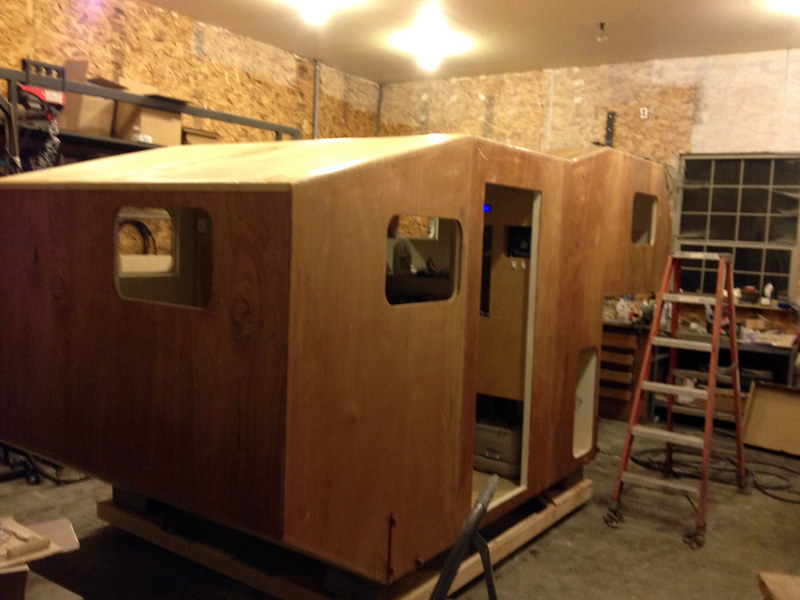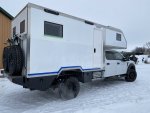rruff
Explorer
Links please.

Everlanders Build - F550 Composite Overlander
Hello all, As you can see, we've been lurking around here since Oct 2012, planning, saving and working towards our Overlander. In early 2013 we found the exact truck we were looking for and snapped it up. As you could see it had quite the appendage on it at the time. I started filming odds...
 expeditionportal.com
expeditionportal.com
Also, the Ram 3500 linked above.
I would suggest following this example.
External aluminum frame with bonded panels.
Build: Ram 3500 and Aluminum/Composite Expedition Camper
Welcome to the documentation of our build! Intro: My wife Courtney and I have decided to make the move towards full time adventure. We currently live in a self built shipping container house: To anyone considering tiny living I say go for it and never look back. Simplify your life and focus on...expeditionportal.com
Except I'd suggest a stronger foam if you can afford it. 15psi XPS is weak stuff. I'm using 4lb/cu ft PVC foam from Carbon Core, and it's ~2.5x the weight, ~10x the strength, and ~5x the cost. I'm using 1.5" on most; 2" on the floor/base. Total of ~$2,500 in foam for a big truck camper. Not that much in the grand scheme of things.





